Ethnographic Park in Tokarnia
Highland sector
WAYSIDE CROSS
Tall wooden cross made of oak is located in the open-air museum at a crossroads from the highland sector towards the buildings of the village of Świętokrzyskie. The monument of small religious architecture comes from the area of Włoszczowa. According to oral tradition, the cross was founded by the Maupas marriage in 1918. Unfortunately, we do not know the intentions of the founders. On the vertical pole of the cross there are carved figures of Christ, four Evangelists, symbols of the Passion and the goblet with the host - carefully cut from thin sheet metal.
FORGE FROM RADOSKA
The forge from Radoska (Radoszyce commune) dates from 1900. It was purchased from Stefan Majchrzak. The forge represents the hen type, with characteristic fireplace without a chimney. Similar forges in the Kielce region (where blacksmith traditions date back to the 16th century) operated until the 1940s.
The building has crown-shaped walls. It was built of pine bars, on oak base and a stone foundation. A wide, double door leads into the interior. Basic equipment of the forge consisted of: a stone hearth with a leather bellows for stoking fire, an anvil, a vice and a hand-held drill. In Kuźnia from Radoska you can also admire the original sets of tools: pliers, hammers, stamps and screw taps.
The forge served for local hosts, providing services such as shoeing horses, repairing carts and agricultural tools, fitting wooden wheels, etc.
During the tourist season museum conducts shows and lessons introducing visitors to the realities of the work of a rural blacksmith.
FARM FROM BUKOWSKA WOLA
The farm from Bukowska Wola (Miechów commune) was built in 1875 (cottage and barn) by Jan Kołodziej. The homestead includes a house with a pigsty under a common roof, a barn, a coach house and a stable. made of stones The cottage is a wide - front, single - track structure in the chamber - hall - chamber - chamber - pigsty arrangement. The walls were erected in a log house structure. The hip roof is covered by thatch. In the hall the entrance to the cellar can be found. The chimney located here has a stove for cooking, so-called "Summer stove", and in the smaller room there is a stove with a built-in hearth, bread oven and a kitchen stove for two firepans. The stable is a reconstruction of a building from the 1920s. A six-sided barn, erected in a log house structure, is covered by a thatched roof. The roof consists of vertical, forked beams attached to the ground , on which horizontal beams are based. From the east, the homestead is closed by shed - a coach house, which was used to store wagons, sleighs and agricultural tools. On the west side there is a stone barn / stable.
In 1991, in the homestead was arranged an exhibition of Jan Bernasiewicz's sculptures. The exhibition was entitled "Save from oblivion. Jan Bernasiewicz, creator of the Sculpture Garden. " There are over 600 sculptures, numerous photographs depicting Master Jan, as well as memorabilia that remained after him.
Jan Bernasiewicz was born on June 1, 1908, died on November 24, 1984. He lived and worked in the village of Jaworznia-Gniewce in today's commune of Piekoszów, 15 kilometers from Kielce. Until 1975, together with his wife Maria, they cultivated half a hectare of land. His idea of saving the cultural heritage for future generations found expression in the sculpture museum invented by the artist in the orchard, which he called the "Small Museum in Jaworznia". He created it for 19 years (1966-1984).
The most interesting works of Jan Bernasiewicz include: "Chapel on the chestnut", "Monument to the Polish Soldiers fallen in the battle of 1939-45", "Copernicus", "Herody", "Hussar", "Mikołaj Rej".
The artist created mainly in wood, less often in stone. With the chisel he gave the carved faces individual features, the lower part of the log was usually left untreated, with its curves and knots. In 1979 he was admitted to the Association of Folk Artists, he also received the prestigious artistic prize of Jan Pock, and in 1980 the award of the monthly magazine 'Przemiany'. Shortly before his death, the artist passed all his achievements to the Kielce Countryside Museum.
HOMESTEAD FROM ŚLĘŻANY
Homestead form Ślężany (Lelów commune) dates back to the turn of the 18th and 19th centuries. Its founder and owner was Jan Sowiński. It consists of a cottage and livestock rooms, located under a common roof. It is a single-bay log house building with a chamber - chamber - hall - stable - barn arrangement. Due to the wetland, the cottage was set on oak piles driven into the ground. The roof is hipped, covered with rye straw (thatched roof). In the room there are an archaic stove, used for cooking on an open fire and a niche for cooking on sheet metal. The hall has a wide chimney with a recess for sweeping soot. Horses, sheep, goats and chickens still have shelter in livestock rooms. A small, single-bay, log barn with "thatched roof" was erected in the farm. In the yard, a well with wooden "crane" were reconstructed.
COTTAGE FROM ROKITNO
The cottage from Rokitno (Szczekociny commune) was built in 1805. The owner of the object was Jan Witek. It is a one-track building, with interiors: chamber - chamber - hall - chamber - chamber and timber wall structure. It is covered with a hipped straw roof. The cottage is characteristic for two-family, wealthy country houses built in the Kraków-Częstochowa Upland. In buildings of this type, the owners, "in old age", after handing over their property to their successors, lived in a dedicated small room. In the large chamber, on the beam laying along the roof, the foundation inscription and the historical date of building were engraved. Inside the cottage you can see furniture characteristic for the region and equipment from the early twentieth century. Attention is drawn to the impressive chest type of "Kraków" as well as the table and chair made by the student apprenticeship as a master carpenter. This is due to the fact that the cottage from Rokitno, based on field research, the workplace of rural carpenter was recreated with a set of original tools. Carpentry in the village of Rokitno was an additional occupation of peasants living mainly from farming. The cottage was founded in the museum in 1977.
BARN FROM BRZUCHANIA
The barn from Brzuchania (Miechówi commune) is part of the buildings of the homestead from Rokitno. A wooden outbuilding with two large rooms and a "pitch" was erected in 1860 on a field stone foundation. The owner of the object was M. Mastrzykowska. The barn, on the plan of a hexagon, was built by an anonymous carpenter, using a rare construction of a hip roof covered with "smooth" straw. Above the gates is an interesting, clearly defined hood. The construction of walls made of thick pine sides is also noteworthy.
COTTAGE FROM NASIECHOWICE
The cottage from Nasiechowice was built in 1895. The first owner was a peasant Wojciech Jakub. The house was built of hewn logs and "halves", in the post-and-plank construction. The wide-front, two-bay building has a hipped roof covered with "smooth" straw. Inside the cottage there is a through hall, two rooms, a kitchen and a chamber. A separate entrance in the back wall leads to the utility room. A small granary was added from the yard to the cottage. Originally, all rooms had clay floors called "polepos". In this building you can admire many interesting, archaic features of a former country house, for example: vertical columns of wall constructions, which were dug directly into the ground, not embedded in the foundation, and windows embedded in the "nibs" - vertical wooden poles fastening door frames. The cottage has wooden doors, mounted on simple wooden hinges called "poles", a furnace with a cavity and a bread oven, as well as a chimney with a recess to soot out the soot in the hall. Inside the cottage from Nasiechowice, a workshop of a rural potter from the interwar period was recreated.
POTTERY WORKSHOP AND STOVE FROM RĘDOCIN
The pottery workshop from Rędocin is a copy of a workshop belonging to the well-known folk artist Henryk Rokita. The building was built around 1900 by his father - Andrzej Rokita.It was built from material from an old, wooden country house, which was bought, dismantled and then erected in the village of Rędocin, some distance from other residential buildings. The building with the walls made of pine is covered by a gable roof covered with shingles. Inside, there is a vertical pottery stove built of brick. It consists of a hearth and a fire chamber separated by a horizontal grate, on which vessels are placed. The bottom of the fire chamber built on a circular plan, heat from the furnace is brought to it by special holes.
The main room of the building is a potter's workshop with two entrances in the walls along the building and two windows in the gable wall opposite the furnace. The pottery is equipped with a foot-driven wheel for turning dishes (called a "toque" in the dialect), attached to a solid, heavy, wooden bench. Parallel to it stands a second bench intended for kneading clay. Above, under the roof, there is a construction made of boards and poles, which was used for drying ceramics. Rotary quern were placed on the side of the wall, used by a potter to grind lead monooxide for glazing vessels.
From the inside of the workshop, you can enter the furnace chamber, in which dishes ready for stoving were placed. The hearth opening is located on the other side of the furnace, in the room where the wood prepared for burning was stored.
HOMESTEAD FROM KALINA MAŁA
The homestead from Kalina Mała represents a type of enclosed homestead, which can be found in southern Kielce region and around Miechów. It consists of cottage, a stable, a barn, a pigst and a spacious coach house. It is a complex of residential and farm buildings from the mid-nineteenth century. The farm from Kalina Mała was built by Wojciech Podyma and Łukasz Idzik. It was bought from the last owner Krzysztof Podyma. Residential building (from 1852) has walls made of pine beams, and was founded on a high foundation of fields bonded with clay. Doors, Double-sash windows, bare, boarded ceiling. Floor in a room made of boards. In other rooms made of clay. The kitchen stove (made of stone) with cope, bread oven and heater. The hip roof of the cottage was covered "smoothly" with straw arranged in the corners into characteristic "stairs". The archaic hole of the smokehouse can be seen in the body of the roof - a remnant of hen houses. On the back, the homestead could be accessed through a double doors, located between brick livestock buildings and a wooden pigsty. In front, the entrance to the yard led through a wide gate, opened on the left of the cottage, leading directly to the roofed, passing coach house. In the homestead, living conditions of a wealthy peasant family from the 1930s were recreated. The owners of the farm, apart from cultivating the soil, also dealt with ropework and seasonal oil pressing. Here you can admire the small, home oil press (standing in the hall next to the summer stove) and a set of tools for making ropes (stored in the chamber).
HOMESTEAD FROM ZŁOTNIKI
The homestead consists of a cottage and a farm building from the end of the 19th century. This two-bay residential building was erected in 1860, as it is evidenced by the foundation inscription placed on the beam in the chamber. The cottage belonged to the local blacksmith, Ignacy Marciszewski and his wife Agnieszka. The building, being one of the oldest houses in Złotniki, has walls made of pine beams and a hipped rafter and purlin roof, thatched. The interior of the cottage originally consisted of a hall, three rooms and a chamber. At the back of the residential house, a wooden outbuilding was reconstructed, divided into a stable, a barn, a pigsty and a shed. Both buildings are an example of folk architecture from the area of today's Jędrzejów commune.
HOMESTEAD FROM SZCZEPANOWICE
The homestead from Szczepanowice represents a type of enclosed homestead in which farm buildings and a cottage form a compact quadrangle. This type of building was once found among others in the Jędrzejów, Włoszczowski and Pińczów counties. Its construction began in the years 1855-1860, the first owner of the farm was Wojciech Bzdela, a peasant with more than 29 morga of land. The construction of the homestead in its present shape was completed in the 1890s. It consists of a log cottage (1855), a large cowshed, a granary with post-and-plank walls (turn of the 19th and 20th centuries) and a shed - a coach house. In addition, in 1912 a cellar was dug in the coach house which was walled with broken stone. The oldest object in the yard is a single-bay, wide-front cottage, with walls made of pine logs and square beams. The interior consists of: a hall, room and chamber as well as an alcove, added at the turn of the 19th and 20th century. The living room has an oven with a niche hearth, as well as a bread oven. In all rooms, except the alcove, the floor is made of clay. The cottage is covered by a hipped thatched roof. The entrance to the area leads through a double doors located on the left side of the house. A wooden barn with a log wall construction was erected at the back of the buildings. The exhibition arranged inside this cottage introduces visitors to the funeral habits of the interwar period. Death was celebrated with great respect. The habits associated with the death of a loved person required, among others the use of a series of rituals, through which the deceased were excluded from the world of living, facilitated his soul's transition to the beyond, and at the same time protected himself and loved ones from the sinister influence of death. To achieve these goals, e.g. mirrors were obstructed, the clock was stopped, or the door to the cupboards and sideboard were left open. The exhibition in the cottage refers to the tradition of so-called "Empty nights" - the habit of watching and praying with the dead.
WINDMILL FROM GRZYMAŁKÓW
A "Dutch" windmill from Grzymałków (Mniów commune) was built in 1931. Originally it was located in the village of Pakuły (Końskie poviat), from where he was transferred to Grzymałków in 1947. In 1976, the museum bought a mill from Wanda Berner. The windmill was placed on the grounds of the museum in 1990. It is built on an octagonal plan, has three floors. It was built on eight oak foundations laid on a foundation made of stone, has bordered walls. Windmill mechanisms - propulsion and transmission - form two wings ("propellers"), wing shaft, wheel, vertical edge shaft, two horizontal edge wheels, spindles and two coil wheels. The building is covered with a gable roof of rafter-hemp structure, with a characteristic "pediment" visible from the windmill's arms. It creates a movable, rotating "cap", typical for Dutch windmills. The "cap" mechanism is mounted on a wheel consisting of two wooden "centrings". On the lower wall, supported on the "cap", a steel rail was mounted, on which trolleys with cast iron wheels are moving. The beams supporting the roof are supported on the trolleys. The "cap" and wings were turned towards the wind with a wooden drawbar, which will be recreated in the future.
MILL FROM DĘBNO
This mill, a typical pole windmill, "koźlak", was built by Michał Binkowski in 1880. The building belongs to the oldest and also the last wooden windmills preserved in the Świętokrzyskie Mountains. In the 1950s, around 15 objects of this type could be seen around Kielce. Most of them ceased to operate between 1955 and 1965.
The construction basis of the pole windmill is a vertical "shifter", fixed in crossed beams, reinforced with six "braces" - the so-called "Goats". Colloquially, the whole construction was called a "goat" - this is where the name of the mills of this type comes from. The vertical axis of the windmill includes a "saddle" on which "vehicles" are supported - two structurally important movable beams between which the drawbar was mounted. The whole building with a planked structure was turned in the direction of the wind by rope and a turnstile, applied to oak posts, dug near the building. In the upper, gable part of the roof, the decorative decking is arranged in a cross motif.
The pole windmill mechanism consists of three units: propulsion, transmission and working. The milling took place thanks to millstones protected by a wooden cover. From there, "grist" - a milled substance - moved to a cylindrical screen, where it was cleaned and segregated. Obtaining good quality rye flour required milling at least four times. "Koźlak" from Dębno has efficient, almost entirely preserved, original equipment and mechanisms.


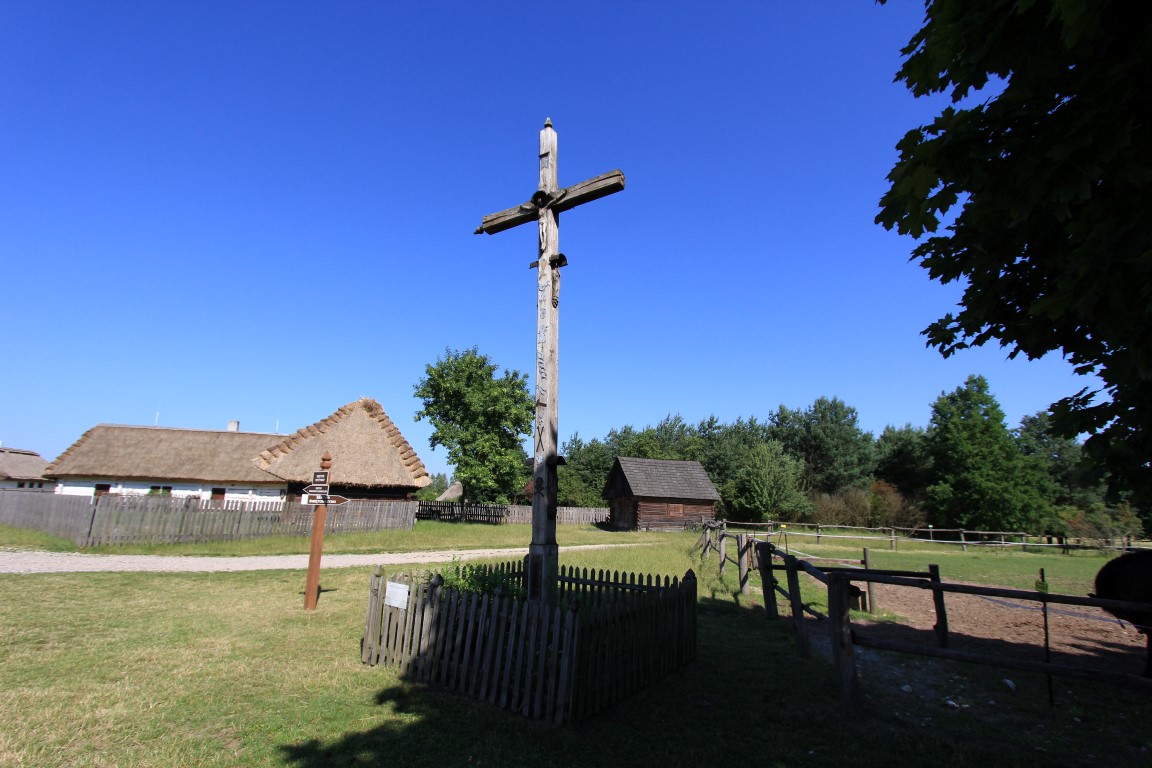
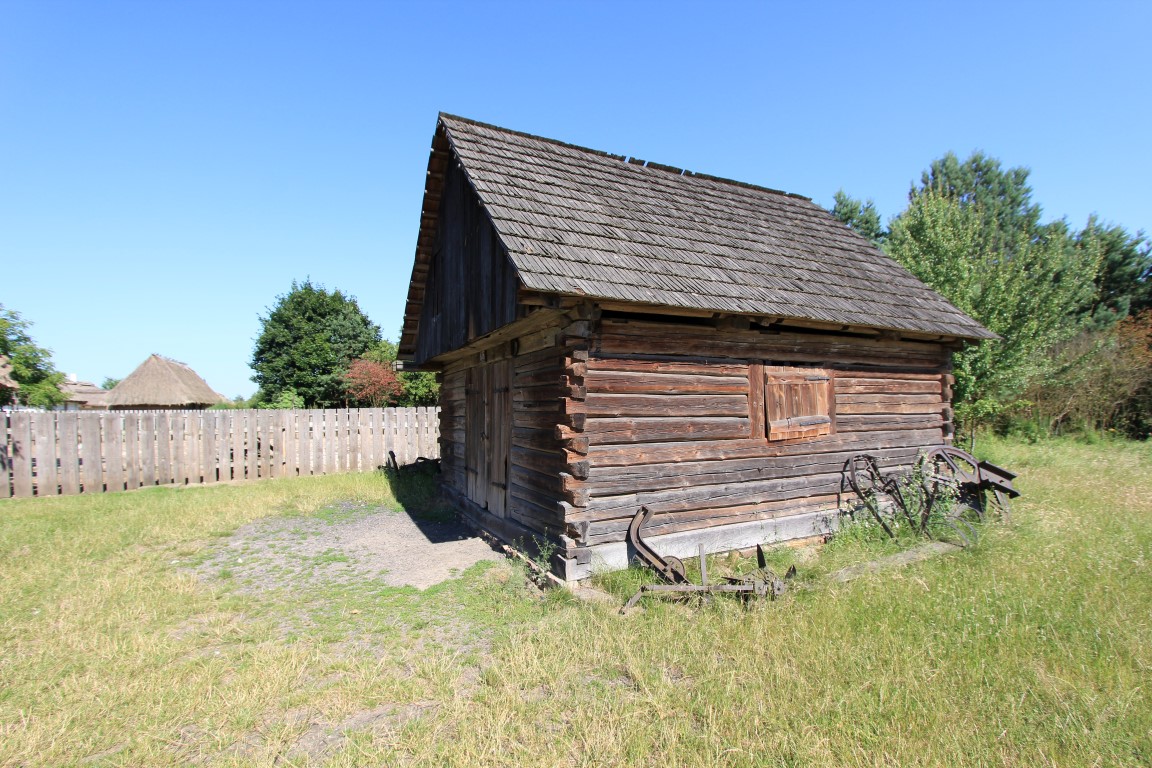
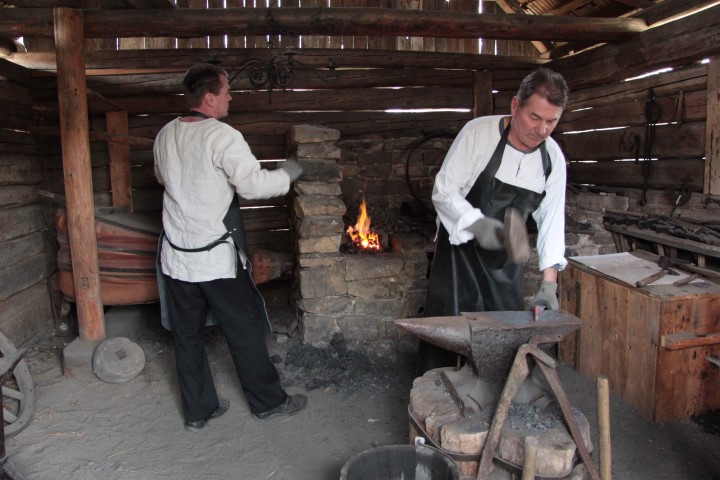
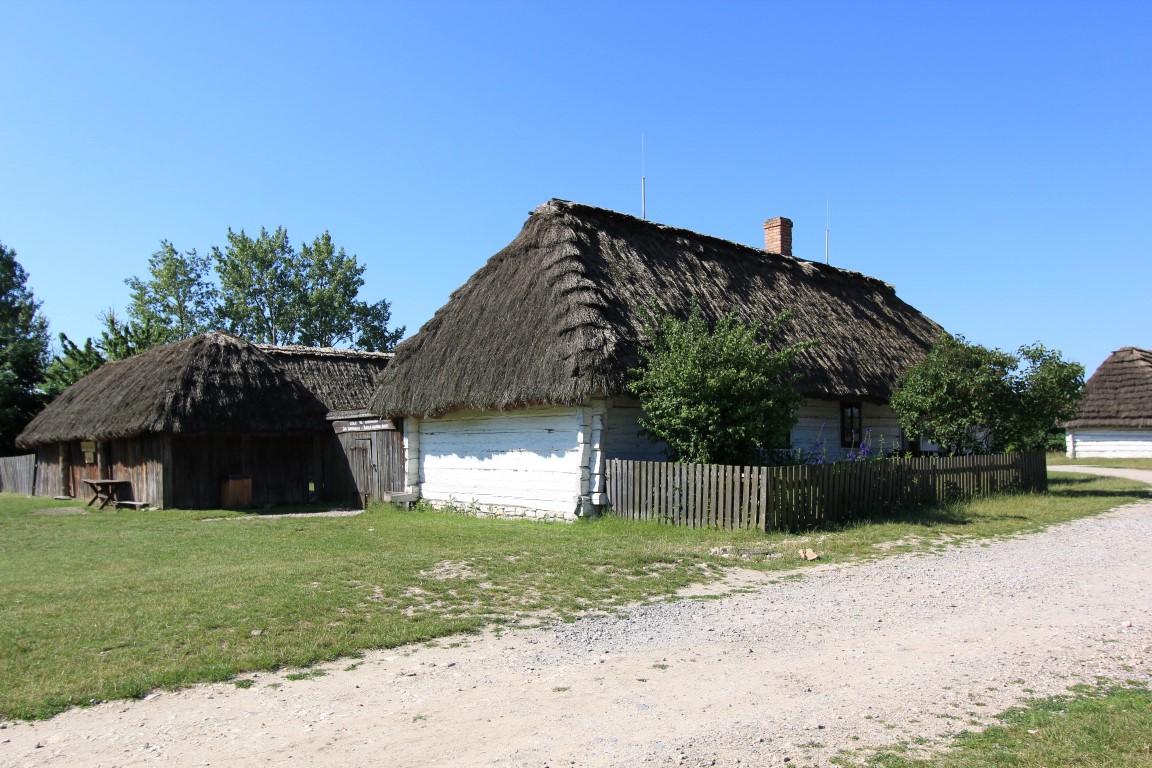
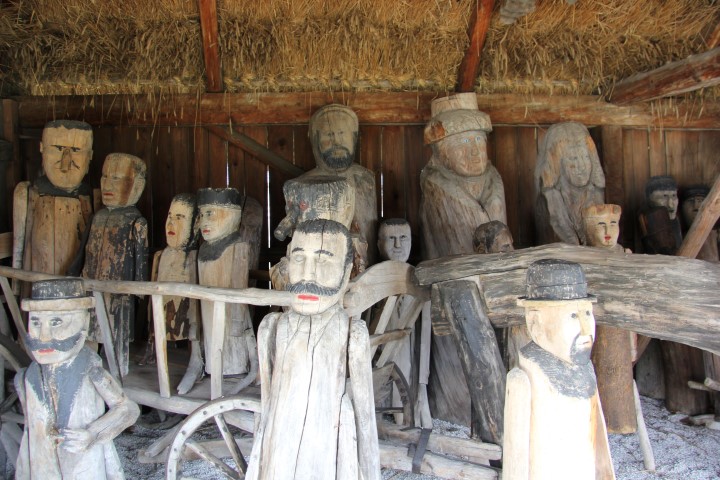

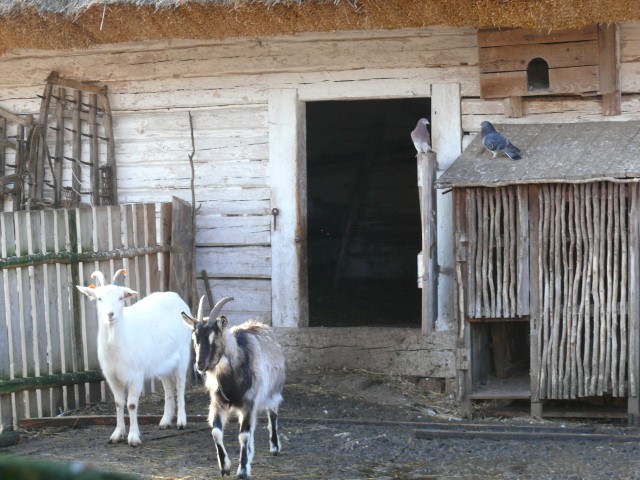

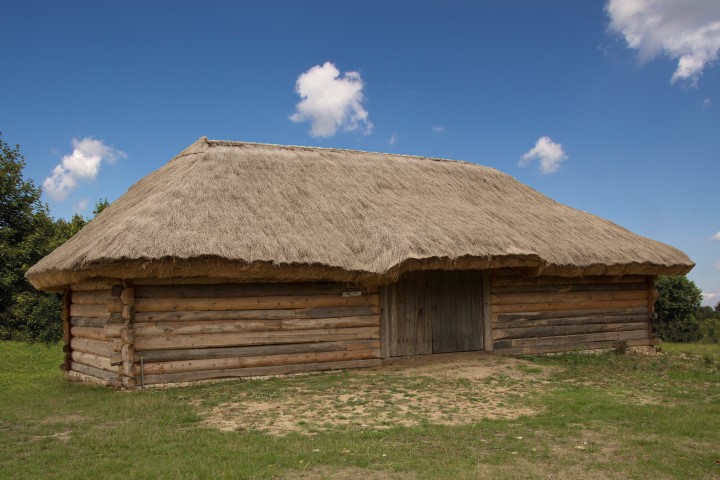
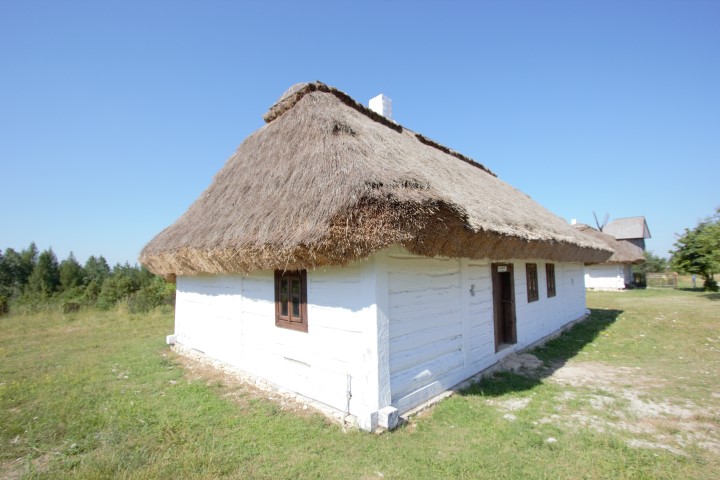
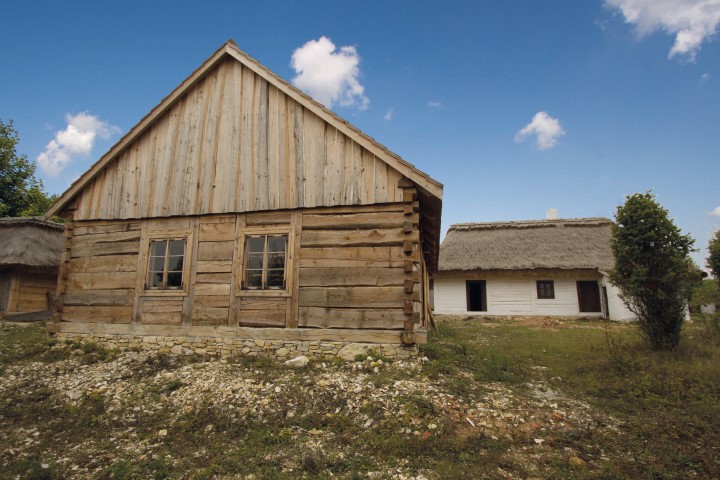
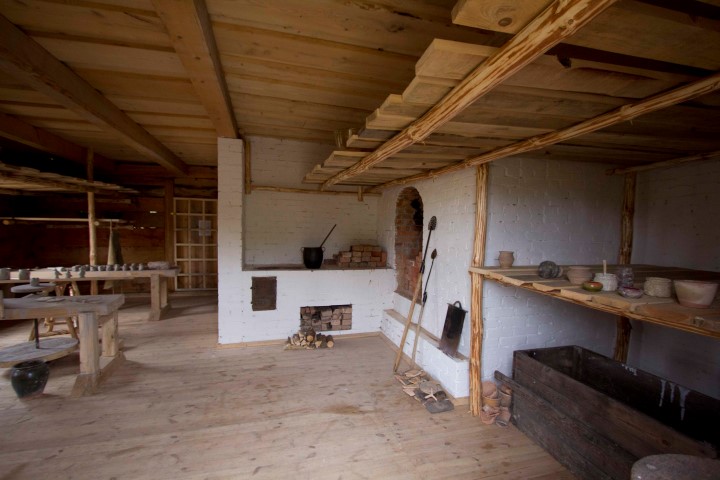
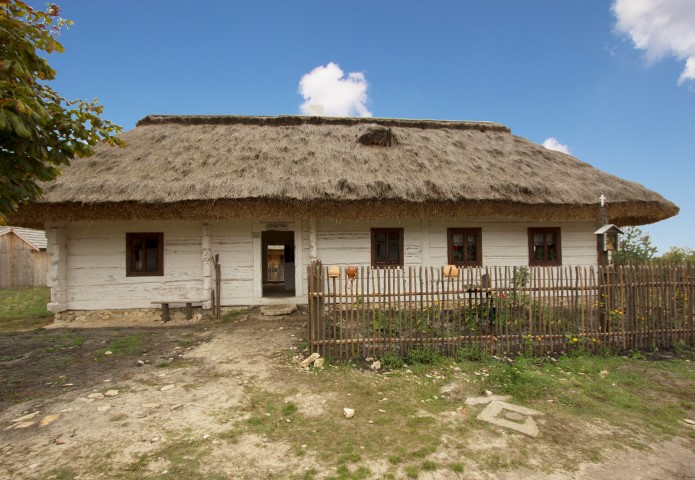
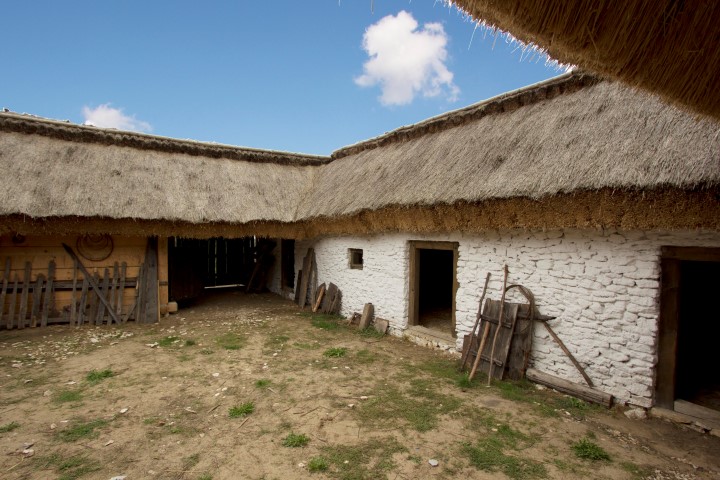

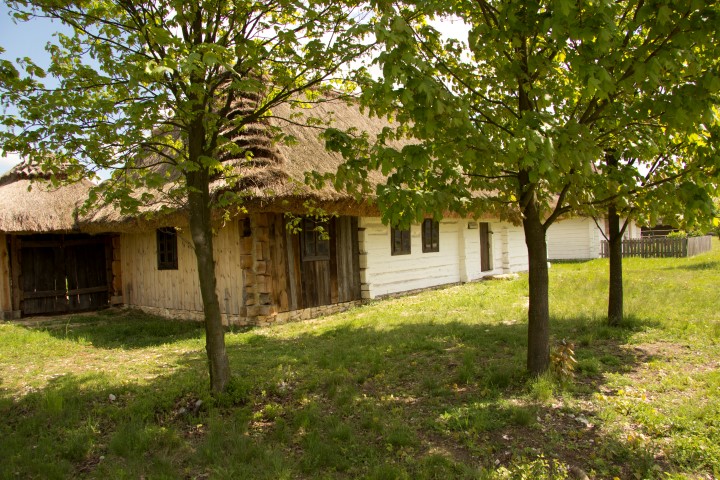

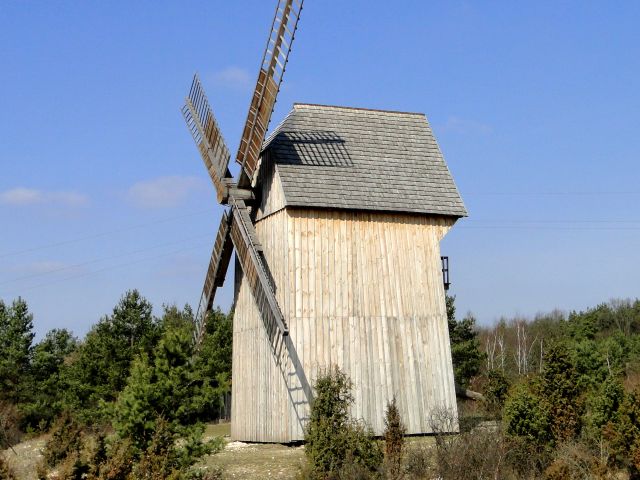
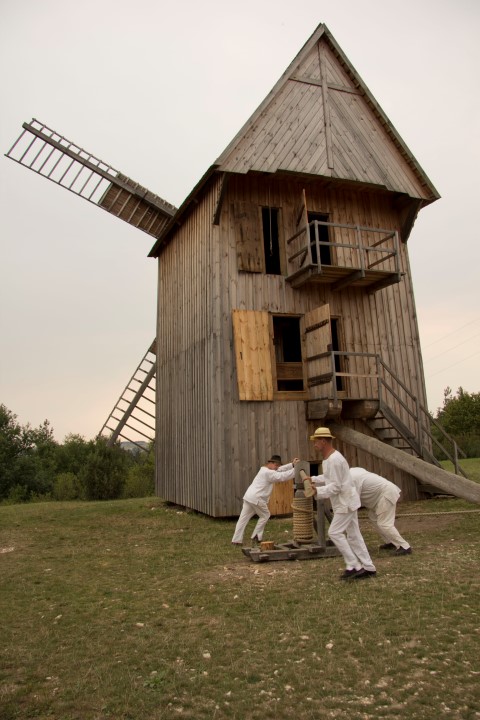

 Zakup współfinansowany ze środków Unii Europejskiej w ramach Europejskiego Funduszu Rozwoju Regionalnego na lata 2014 – 2020
Zakup współfinansowany ze środków Unii Europejskiej w ramach Europejskiego Funduszu Rozwoju Regionalnego na lata 2014 – 2020